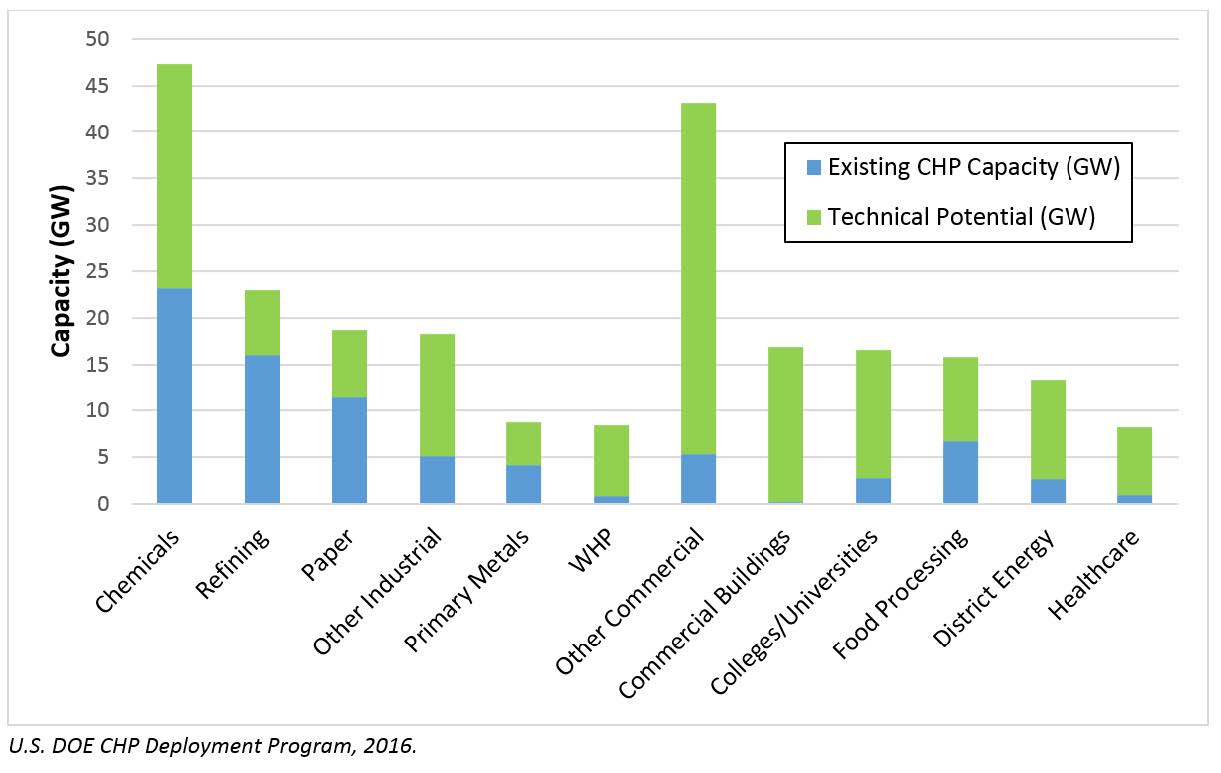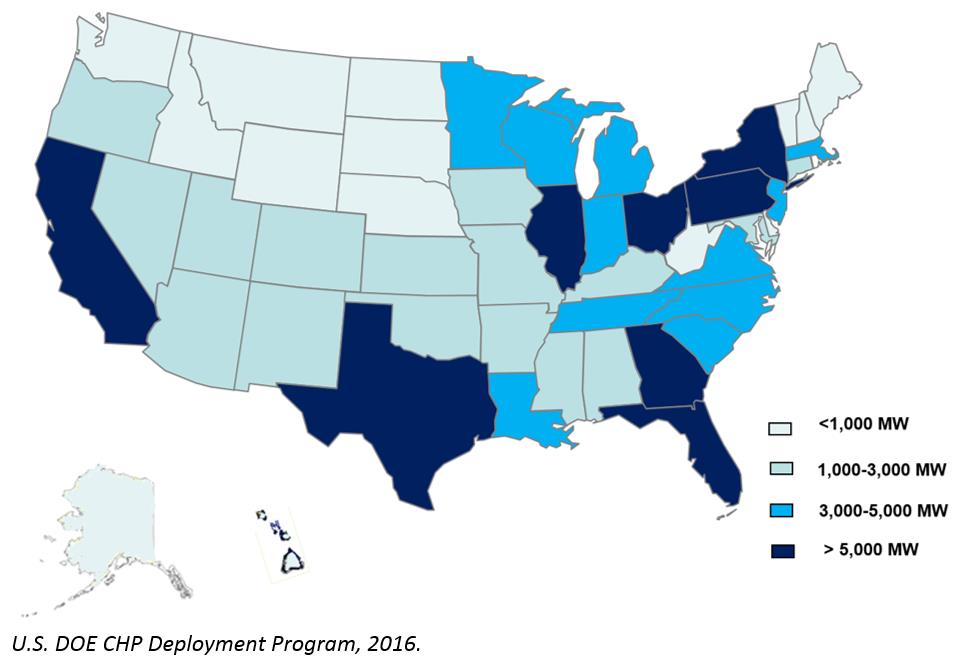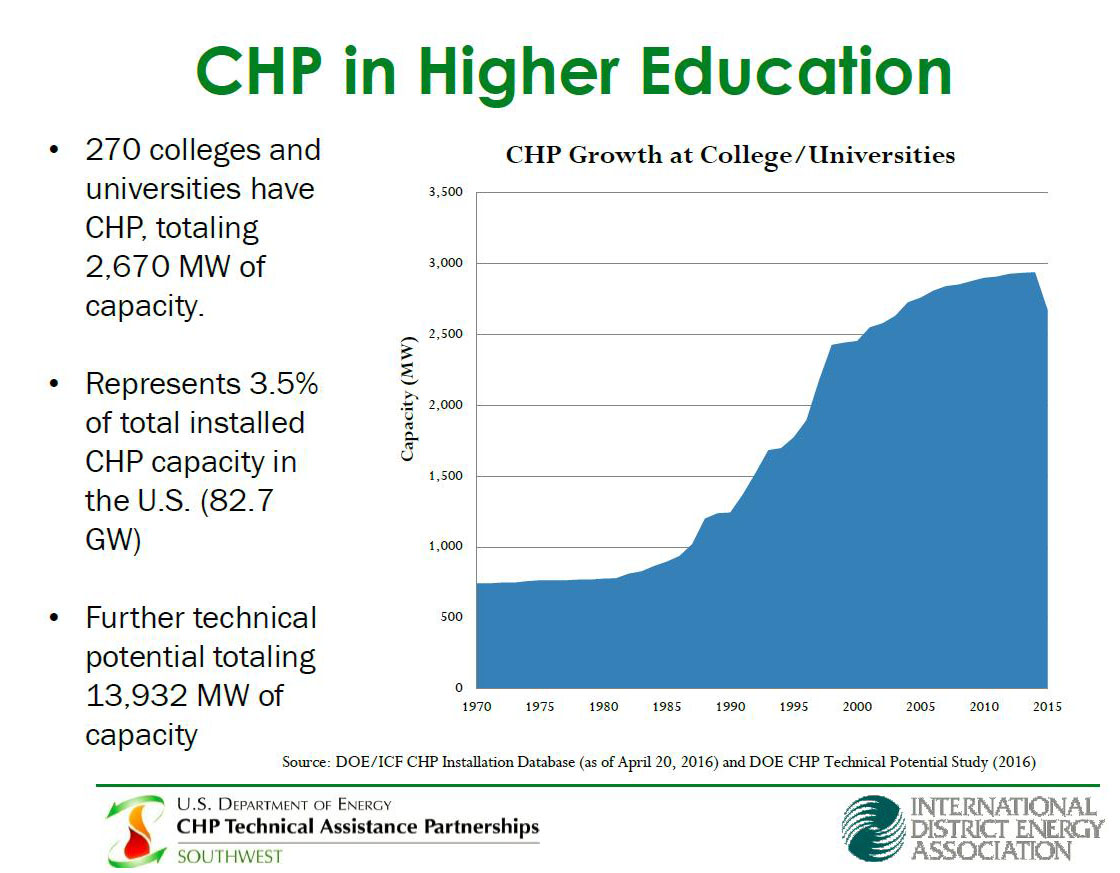The U.S. Department of Energy (DOE) recently published a report on the technical potential of Combined Heat and Power in the U.S. by state. The report pointed out that CHP directly addresses many of the steps we’ve been trying to take as a country in terms of our energy consumption, as it provides the means for reduced energy operating costs, economic growth, and reduced greenhouse gas emissions, among others. The lower energy operating costs, in addition to things like CHP-friendly environmental regulations and resiliency initiatives in the face of grid outages, is seen by the DOE as one of the main drivers behind current CHP growth across the nation.
The DOE also presented a webinar on CHP specifically for higher education that I thought intersected well with this report, which notes that existing usage of CHP nationwide is already avoiding 241 million metric tons of CO2 as compared to separate generation of electricity and heating or cooling. One point this presentation also made, which is important for colleges and universities to consider, is that these types of systems can actually increase energy reliability, which is crucial for facilities that require energy for a number of buildings used by hundreds or thousands of individuals.

While it’s great to see the strides we’ve already made in adopting CHP in many sectors across the country, the analysis in this report shows that there is still significant technical potential for additional CHP capacity—notably, about 141GW of traditional CHP potential for on-site use distributed among the industrial (65GW) and commercial (76GW) sectors. Higher education, specifically, has one of the highest proportions of technical potential to existing capacity.
The figure below shows the total on-site technical potential in each state. States with the most technical potential include densely populated states with large manufacturing sectors, such as California, Texas, Ohio, Pennsylvania, New York, and Illinois. The least amount of technical potential is found in rural states in the Northwest and northern New England regions.


As the DOE report notes, CHP has a number of benefits for a variety of industrial facilities and commercial buildings, such as reducing the strain on the electric grid and significantly decreasing harmful emissions, as well as using clean energy sources like natural gas. For facilities like hospitals, wastewater treatment plants, and colleges and universities, these benefits have the capability to decrease overall operating costs and improve efficiency, making CHP a sensible option in many cases. To learn more about whether CHP could be right for your facility, read our whitepaper on the topic, or take a closer look at the DOE’s reports in full.
